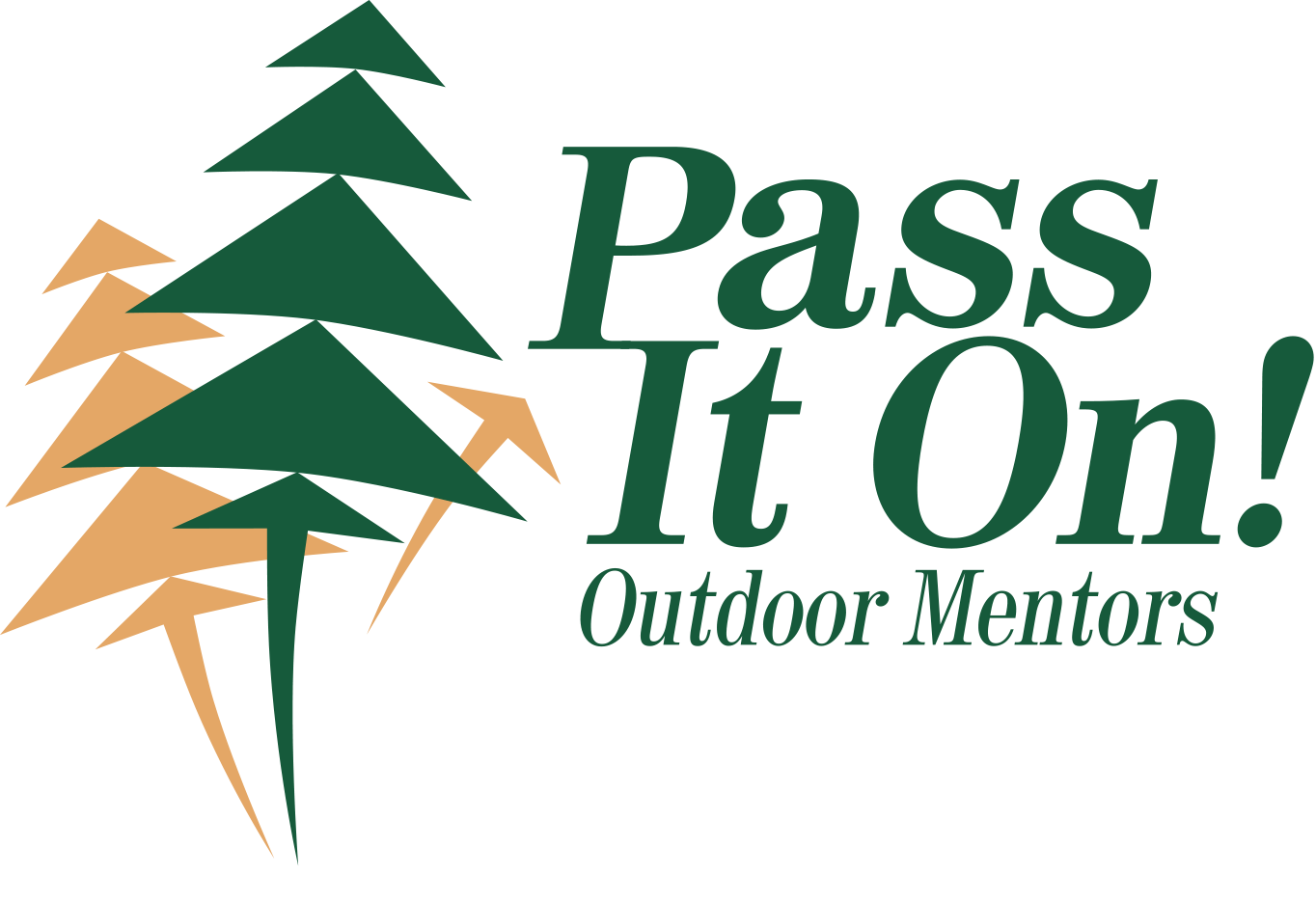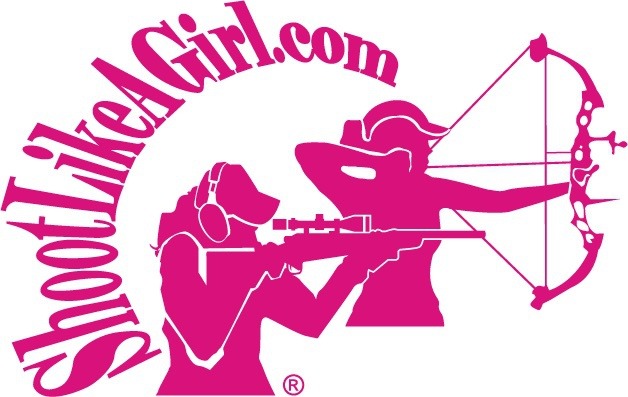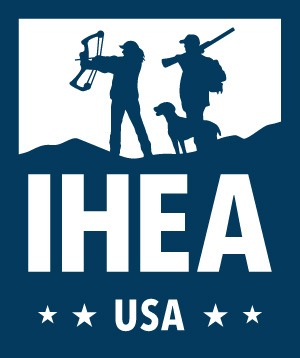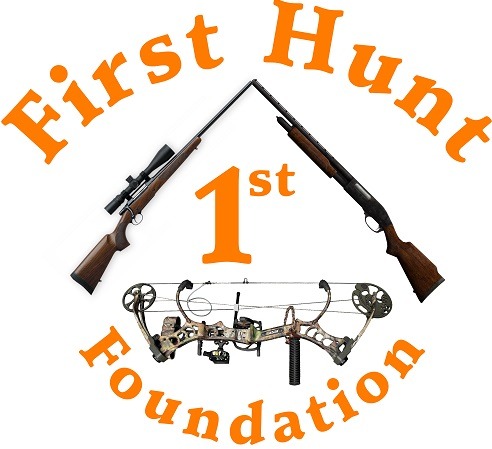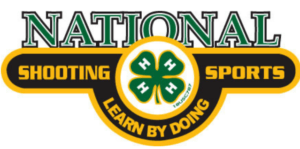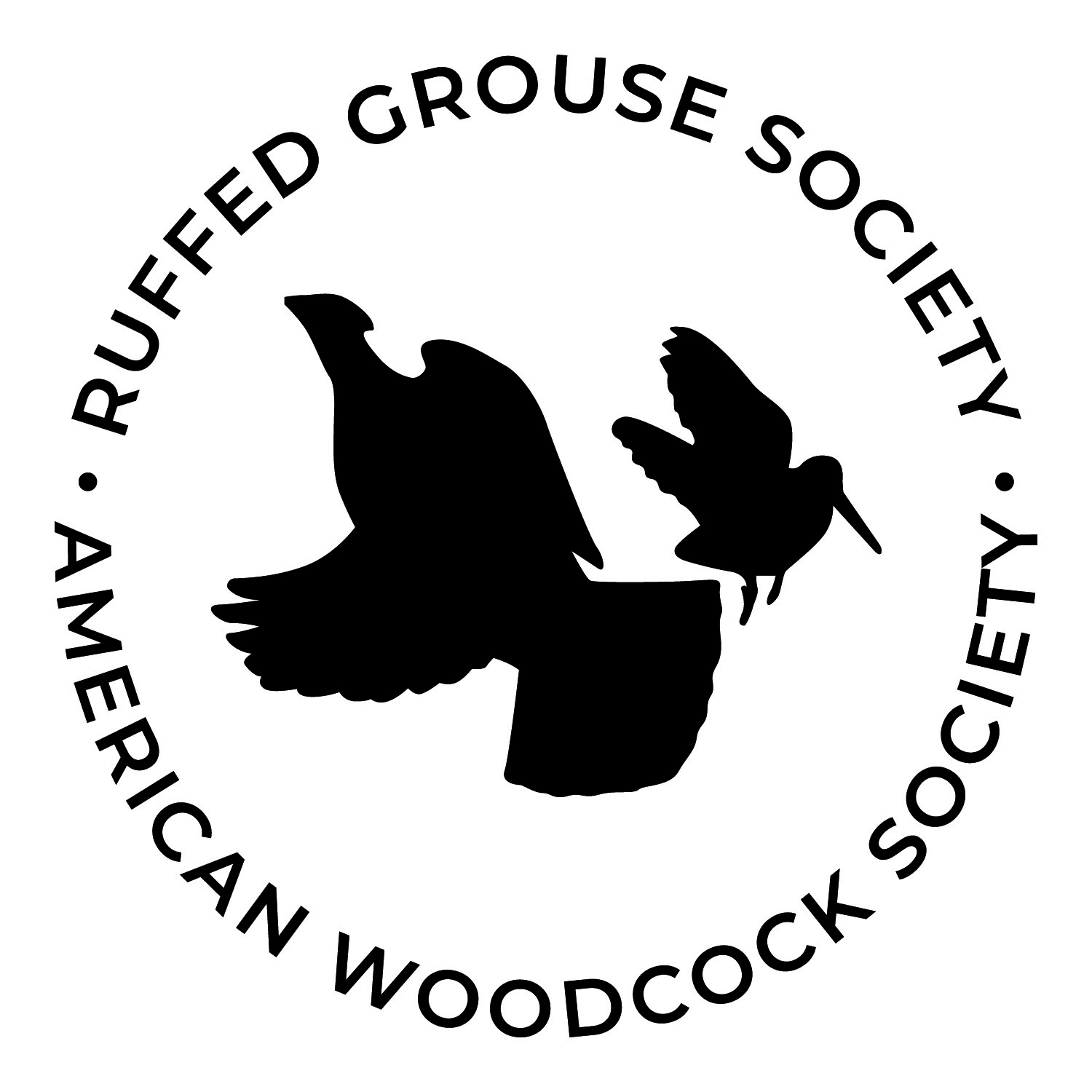Join the
+ONE® MOVEMENT
From small game and upland birds to big game, waterfowl and even the creatures that define the term “top of the food chain," hunting offers a priceless bond with the natural world, food for the table and a welcome respite from the world’s daily grind.
Learn MoreAll About Hunting
From small game and upland birds to big game, waterfowl and even the creatures that define the term “top of the food chain,” hunting offers a priceless bond with the natural world, food for the table and a welcome respite from the world’s daily grind.
GET STARTED IN HUNTING
If just one in three hunters add one new person to our hunting traditions, we’ll secure a strong future for generations to come. Be the one. Ignite the passion that can change the course of someone’s life forever. For all hunting has done to enrich your life, join the +ONE movement and invite someone hunting. Share your experience with posts on social media. #PlusOneMovement.
+ONE Partner Organizations
Working together to encourage responsible mentorship in local communities.
FIND A RANGE
Hunting ACTIVITIES
Deer Hunting
Hear the words “deer hunting” and you’ll likely think of the ubiquitous whitetail—and for good reason. You can find this species in 44 states, usually in plentiful numbers on private and public lands. In five of the six states the whitetail doesn’t call home, you can still deer hunt, but in Alaska and California it will be for the elusive black-tail, Nevada and Utah are home on the range for mule deer, and Coues deer have Arizona for an address. (Trivia: The only state that lacks a native deer population is Hawaii!).
Hunting ACTIVITIES
Pheasants
With a helicopter rise at the flush preceding its zippy horizontal flight for yonder, a long tail that’s distracted more than a few hunters to miss and a cackle that mocks when you do, this gaudy bird reigns the world of upland bird hunting. So popular is this bird in the vast plains of the Midwest that opening day is legitimate cause to skip school, work, church and afternoon college football. If you’ve ever been to an opening day in Pierre, South Dakota, you’ll know exactly what we’re talking about.
Hunting ACTIVITIES
Elk
Considered one of the most majestic animals on the continent, the Rocky Mountain elk is emblematic of western hunting. From the bugling of herd bull monarchs keeping their harems of cows in line to the breathtaking vistas and, oh, those towering tiers of antlers, this is a prized experience for anyone with the patience to hike the miles and put the hours in behind a binocular to plan a stall. Colorado, Wyoming, Montana, Washington, Oregon, Arizona, New Mexico and Utah are always top destinations, but reintroduced populations in states like Kansas, Kentucky,
Hunting ACTIVITIES
Wild Turkeys
They’re not just for Thanksgiving anymore! In fact, America’s wild turkeys are as much a sign that spring is here as the Easter bunny. With eyesight that puts an eagle to shame and an all-too-often reluctance to come within range despite the lively “conversation” between bird and a hunter’s slate call, spring turkey seasons are a challenge that see camo-clad, shotgunners head to the woods and fields in droves.
Hunting ACTIVITIES
Waterfowl
Four flyways, colorful species small and large, the art of the decoy and the thrill of a Labrador retriever leaping over the boat’s bow to make an enthusiastic retrieve of goose or duck make waterfowling one of the most thrilling hunting sports around. It’s also one of the oldest—drawings of waterfowl have been found in Ice Age caves, Egyptian tombs and even the artwork of B.C.-era Peru. America’s earliest settlers from “across the pond” found their new home in the East boasted a nearly unlimited supply of ducks, geese and swans—good eating for starving Colonials.
Find a preserve
WHERE TO HUNT
Wingshooting
Hunting preserves—private, regulated properties that stock game animals—are a great resource for hunters. They provide a controlled environment and an increased chance for success. Big-game preserves often include one-on-one guiding, great for novices, while upland bird preserves are a favorite for training young bird dogs.
WHAT YOU NEED TO KNOW
Hunting Basics And Tips
| 1 |
Hunting safety is the first priorityWatch a safety video or take a hunter education course to learn more. |
| 2 |
Read hunting laws and regulationsHunting laws and regulations vary from state to state. Learn more. |
| 3 |
Wear proper hunting gearThe more comfortable you are, the longer you’ll hunt and the better the chances for success. |
| 4 |
Essential hunting equipmentCheck out where to buy hunting firearms and ammo for your next trip. |
| 5 |
Go with a friendInvite someone new hunting. Check out the apprenticeship hunting program. |
Obtaining A Hunting License
Hunting licenses can be purchased at various places, including local firearms retailers and angler supply stores, as well as directly from the local wildlife management departments online. States usually require hunters to take a hunter education course before they take to the woods, but many make exceptions if the hunter will be accompanied by a fully licensed and experienced hunter through an apprenticeship program.
9 Black Friday Hunting Deals You Don't Want To Miss
Black Friday & Holiday 2025: Hunting-Friendly Deals From NSSF Patron Members
If you've been thinking about upgrading your hunting rifle, adding a new optic or picking up better field gear, Black Friday and the year-end holiday sales are a smart time to buy.
Several NSSF® Patron Member companies are running confirmed 2025 Black Friday, Cyber Monday or Q4 holiday promotions on firearms, accessories and apparel that hunters can put to good use. Below is a roundup of standout offers, along with direct links so you can check the details and fine print before you buy.
Note: Promotions can change quickly. Always double-check dates, exclusions and rebate instructions on the manufacturer's site before purchasing.
Beretta USA - 25% Off Sitewide Early Black Friday Deals

Beretta is running Early Black Friday Deals with 25% off sitewide, with some exclusions, through November 30, 2025 at 11:59 p.m.
That discount applies across Beretta's online store, including:
- Hunting clothing (upland, waterfowl and cold-weather layers)
- Gun accessories and cases
- Lifestyle apparel you can wear from camp to town
Action Target - Up to 35% Off Black Friday Target Deals

If you're heading to the range to confirm your zero or stay sharp between seasons, Action Target has a dedicated Black Friday promotion on its online store.
Their paper/cardboard targets page advertises "SAVE 35% FOR BLACK FRIDAY WITH CODE: PAPER35" on a wide selection of targets.
You'll also find Black Friday sections for:
- 30%, 40% and 50% off select steel and paper targets
- Free-shipping items and clearance gear that help stretch your budget further
Blade-Tech - 20% Off Holsters and Range Gear

For hunters who carry a sidearm while scouting, camping or in the backcountry, a good holster matters. Blade-Tech Industries is running an "EARLY BLACK FRIDAY SALE" with:
- 20% off Tek-Mount, Velocity holsters and more, using code EARLYBLKFRIDAY on their website banners and product pages.
These Kydex holsters and attachments are well-suited for range practice and carry around camp or in the truck.
See Blade-Tech's Early Black Friday SaleBrownells - Black Friday 2025 & Early Savings on Hunting Gear

Brownells has a dedicated "Black Friday 2025" page plus Early Black Friday promotion messaging across its site.
Highlights include:
- Black Friday 2025 event with products "up to 40% off" and 15% off many items with a promo code listed on the page
- Early Black Friday messaging featuring free shipping on orders $47+ and "massive savings" on brands like Magpul, Hornady, Faxon, Leupold, ATN & more that are highly relevant to hunters (stocks, ammo, scopes, range gear, etc.)
This makes Brownells a strong one-stop option for:
- Rifle scopes & red dots
- Hunting ammunition and reloading components
- Gun parts, slings, bipods and cleaning supplies
MIRA Safety - 25% Off Sitewide Black Friday Sale

While not traditional "hunting gear," MIRA Safety has products that can matter for wildfire smoke, hazardous environments and backcountry emergencies hunters sometimes encounter.
MIRA's site is currently running a "Black Friday Sale 25% Off Sitewide - No Code Required" banner with discounted prices shown across multiple products, including apparel and preparedness gear.
This is a good time to consider:
- Protective masks and filters for smoke and ash
- Preparedness kits and apparel for harsh conditions
Savage Arms - 2025 Rebates on Renegauge Shotguns & Hunting Rifles

Savage Arms, a staple for deer, predator and upland hunters, is running several 2025 rebate programs that overlap the Black Friday / late-fall timeframe. On Savage's official Promotions & Rebates page you'll find:
- $100 mail-in rebate on any Savage Renegauge shotgun
- Valid for purchases October 1-November 30, 2025
- $200 mail-in rebate on any Model 110 or IMPULSE rifle with a Proof Research barrel
- Valid for purchases November 1-November 30, 2025
- Additional rebates on rimfire models (Rascal, 93, 93R17, Mark II) useful for small-game hunting and training
While these are technically rebate programs rather than coupon codes, they function like a holiday savings event that lines up perfectly with your Black Friday shopping window.
View all Savage promotions and submit rebatesSmith & Wesson - 2025 Long Gun Holiday Rebate

Smith & Wesson Brands, Inc. is running a Long Gun Holiday Rebate for 2025 that covers a variety of rifles and carbines suited to small-game, predator hunting and training.
According to official rebate documentation and industry announcements:
- The Long Gun Holiday Rebate runs November 1 - December 31, 2025
- Buyers can receive $50-$100 back on eligible M&P15-22, M&P FPC, S&W Response carbines, M&P15 and M&P10 models after mail-in or online rebate submission
These rimfire and centerfire platforms are popular for:
- Small-game and varmint hunting
- Youth and new-hunter training
- General range use that builds skills for the field
Taurus & Heritage - Q4 2025 Pistol and Revolver Rebates

Taurus Holdings, Inc. is running multiple Q4 2025 rebate offers that can appeal to hunters and folks who carry a sidearm in the field:
From the official Taurus Rebates and TaurusPromos pages:
- 2025 Q4 Taurus G-Series $30 Savings Event
- Buy a qualifying Taurus G-Series pistol between October 16 - December 21, 2025 and receive a $30 rebate.
- 2025 Q4 Taurus/Rossi Revolver $30 Rebate
- Same dates; $30 back on qualifying Taurus or Rossi revolvers.
In addition, the associated Heritage Manufacturing/Taurus rebate portal offers:
- "Heritage Rough Rider + Rancher $25 Roundup"
- Buy a new Heritage Rough Rider® revolver or Rancher™ carbine between October 16 - December 21, 2025 and get $25 back.
These rimfire revolvers and carbines are especially useful for:
- Small-game hunting and pest control
- Plinking and skill-building for new shooters
Silencer Shop - Black Friday Suppressor Deals

For hunters in states where suppressors are legal, Silencer Shop is advertising an active Black Friday suppressor sale on its own site.
Their "Suppressor Deals" and homepage banners highlight:
- Black Friday deals on a wide range of suppressors
- Free tax stamps and free gift cards on select models
- Ongoing free shipping
Many of the featured suppressors are well-suited for:
- Hog and predator hunting
- Low-recoil, hearing-safe deer rifles
- Reducing muzzle blast and noise on ranch or property-management guns
(Always check your state and local laws regarding suppressor ownership and hunting use.)
Browse Silencer Shop Black Friday Suppressor DealsMake the Most of the Holiday Season
From sitewide 25% savings on Beretta apparel and accessories to Savage shotgun and rifle rebates, Smith & Wesson long gun incentives and Silencer Shop's Black Friday suppressor promotions, NSSF Patron Members are offering a wide range of 2025 holiday deals that can make your time in the field more effective and enjoyable.
If you've been waiting for the right moment to invest in new hunting gear or upgrade your setup, these Black Friday, Cyber Monday and Q4 rebates are worth a look, just be sure to double-check the details on each company's site before you buy, many companies refresh their deals daily throughout the holiday shopping season.
Find More Deals
While these offers highlight confirmed Black Friday and holiday promotions from NSSF Patron Member companies, they're far from the only deals available. Many additional firearms, optics, and hunting-gear discounts are offered through major retailers, local gun shops, and online outlets, so be sure to check your favorite stores for even more savings this season.
How to Read Topographic Maps for Deer Hunting
Topographic maps (topo maps) can be a secret weapon for turning a planned hunting trip into a successful harvest. Topo maps will help you find pinch points, funnels and hidden bedding areas that will help guide your hunt. In this guide, we'll cover contour lines, mapping strategies and essential terrain features so you can plan smarter, stealthier hunts and zero in on high-probability zones. Whether you're a novice still learning the ways of the woods or a seasoned hunter fine-tuning your strategy, mastering topographic maps will help turn the odds in your favor next time you're in the field.
Helpful Topo Map Features for Scouting Deer
Contour Lines
Contour lines are the lifeblood of a topographic map. Elevation dictates nearly all hunt-planning considerations: wind, access, thermals and more. Each contour line represents a specific height above sea level, and the vertical distance between adjacent lines - or the contour interval - tells you how much elevation changes. Lines packed tightly together indicate steep slopes or cliffs, while widely spaced lines reveal gentle inclines and flats. By identifying the darker, labeled contours and counting the lighter intermediate lines, you can visualize ridge tops, saddles and valley bottoms - key terrain features that influence deer movement and stand placement.
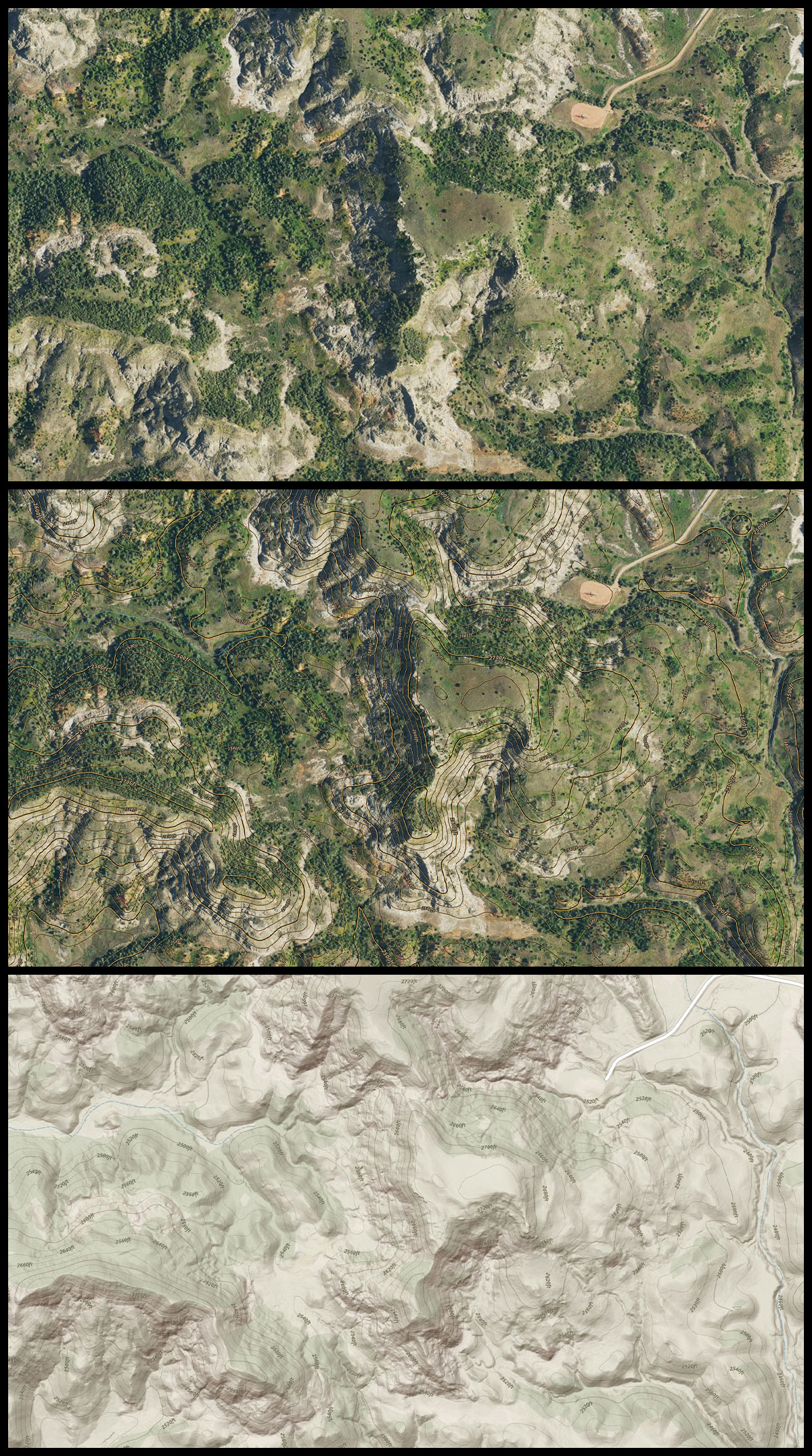 The top image is a traditional satellite view, the middle image is a "hybrid" view, where contour lines are overlayed a satellite image. The bottom view is a traditional topographic map.
The top image is a traditional satellite view, the middle image is a "hybrid" view, where contour lines are overlayed a satellite image. The bottom view is a traditional topographic map.
Map Scale and Ratio
A map's scale defines how distances on the paper translate to real‐world ground distances. A ratio scale (also called a fractional scale) expresses this relationship numerically; 1:24,000 means that one unit on the map corresponds to 24,000 of the same units on the ground. Measure the map distance (in inches or centimeters) and multiply by the ratio to get the actual distance (for example, 2 inches × 24,000 = 48,000 inches or 4,000 feet). A bar scale (graphical scale), on the other hand, presents a drawn line segmented into real‐world units, miles or kilometers, that you can directly compare against a ruler or the map's edge. Because a bar scale retains accuracy if the map is enlarged or reduced, it offers an easier way to gauge distances in the field.
Legends and Symbols
A map's legend is the decoder ring for every symbol, line style and color you see on a topo map. It tells you which squiggly blue line represents a perennial stream, which dashed line marks an unmaintained trail and what shade of green denotes dense timber versus open meadow. By consulting the legend, you transform abstract icons into real-world features, such as waterholes, ridgelines, logging roads, fences and even deer food plots. Cross‑referencing the legend with the terrain prevents mistaking a swamp for a hayfield or a faint game trail for a logging road, keeping you oriented and confident when planning your hunt.
Finding Key Terrain Features
Ridges and Saddles
On a topo map, ridges appear as elongated "U" or "V" shaped contour lines whose closed ends point downhill, marking the crest of high ground. Saddles show as gentle dips between two peaks, where contour lines squeeze into an hourglass or figure-eight shape before opening back up. Deer favor ridgelines for the ease of travel and concealed routes they offer and use saddles as natural funnels between these high-ground travel highways. By tracing ridges and spotting adjacent saddles, you reveal pinch-points where deer are most likely to pass. Overlay aerial imagery or hike in to find worn trails and thick cover to confirm these travel corridors. Positioning your stand at a saddle's narrow point or right on a ridge crest intersection places you in their path and gives you a tactical advantage.
 The above image is a great example of both a ridge and a saddle. You can see the two higher points on the left and right dip and narrow to form a saddle in the middle.
The above image is a great example of both a ridge and a saddle. You can see the two higher points on the left and right dip and narrow to form a saddle in the middle.
Valleys, Draws and Drains
On a topo map, valleys show up as "U" or "V" shaped contour patterns pointing uphill, marking channels where water gathers and flows. Draws are narrower, steeper channels with tightly packed contours that feed into larger valleys. These low-ground routes offer deer water, cover, shade and energy-efficient travel through rugged terrain. By tracing valleys and draws, you uncover the natural highways deer prefer, especially where multiple small draws funnel into a bigger bottomland. Use aerial imagery or elevation overlays to confirm pinch points and bedding areas along these corridors. With these tips, you can pinpoint high-traffic zones at junctions where a draw spills into a valley or meets a ridge saddle. Positioning a stand or blind at these intersections, with wind and light in your favor, creates a targeted hunting setup.
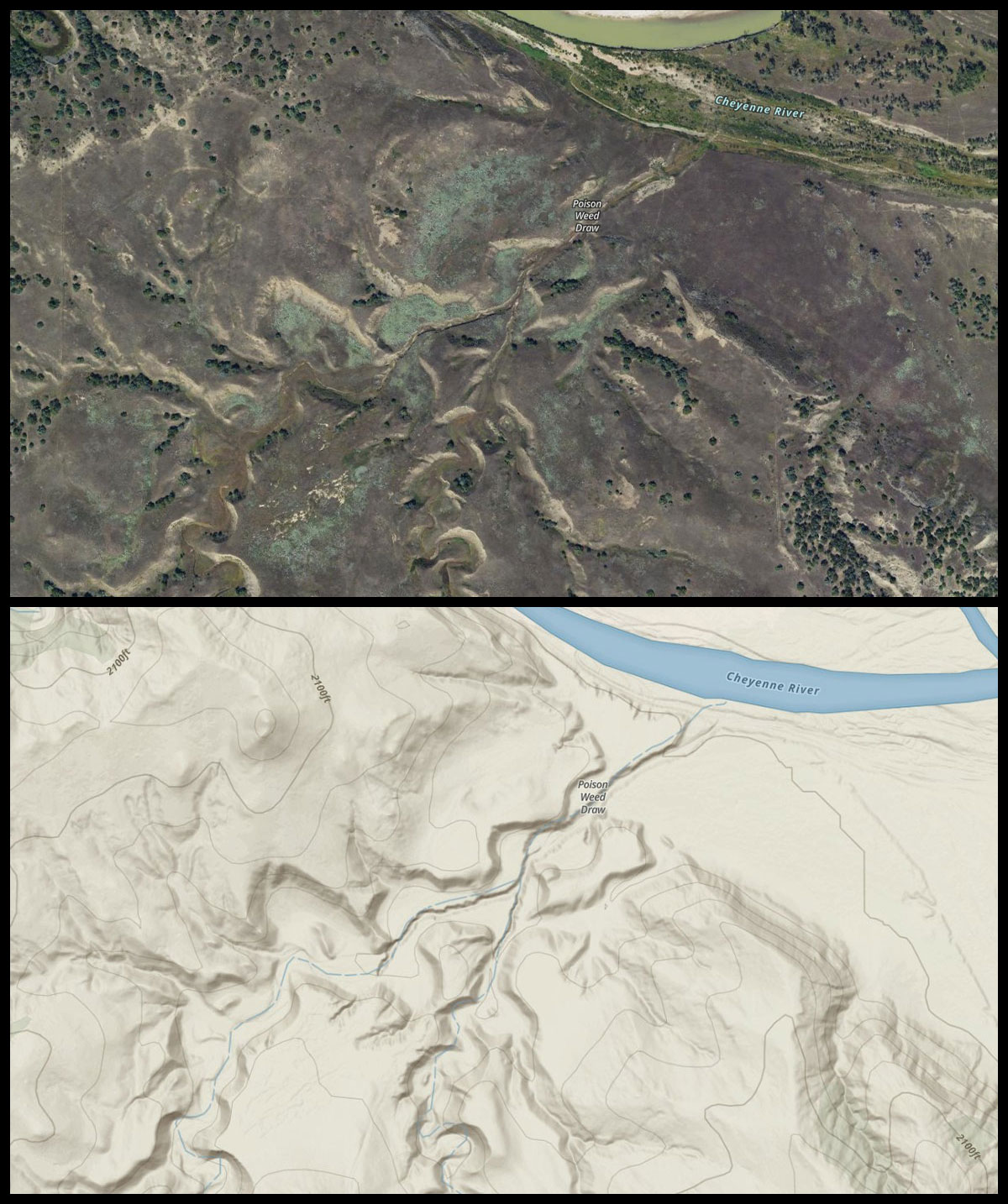 The draw shown here can be seen both via satellite and on the topo map. In arid climates, the exposed dirt and shade from the steep banks create cool spots of dirt for deer to bed in.
The draw shown here can be seen both via satellite and on the topo map. In arid climates, the exposed dirt and shade from the steep banks create cool spots of dirt for deer to bed in.
Pinch Points and Natural Travel Routes
Deer instinctively gravitate toward the landscape's natural chokepoints; narrow saddles between ridges, tight draws carved by streams or slim strips of cover bordering open fields because they conserve energy and stay concealed. These pinch points concentrate movement much like a bottleneck funnels water, guiding deer along the easiest, most sheltered path. By methodically mapping these funnels and linking them to broader corridors such as creek bottoms, ridge trails, field edges or old logging roads, you transform a large area into a handful of high-traffic hotspots. Aerial imagery and topographic maps reveal the subtle rises and falls in terrain, while on-the-ground scouting confirms worn trails, rubs and scrapes. Once you've connected the dots, you will see how a wide travel area near a potential ambush location forces deer into a smaller gap, channeling deer into predictable, repeatable pathways.
With chokepoints and corridors in hand, you can shrink acres of dense cover into a pinpointed hunting zone. Position your stand at the intersection where a dry run meets a ridge saddle or where an ag-field's edge narrows downwind of thick cover. Factor in prevailing wind directions, daily light angles and seasonal shifts in deer behavior, and you've found the sweet spot. Once you're on location, you'll know precisely where a buck is most likely to appear, long before he steps into your shooting lane.
 When cover is limited, intersecting lines of cover create natural pinch points.
When cover is limited, intersecting lines of cover create natural pinch points.
Water Sources
Water holes, whether a spring-fed pond, a winding creek or the edge of a seasonal swamp, are deer magnets year-round. On a topo map they're always marked in blue, often positioned between wider, gently sloping contours that reveal basins or drainage bottoms. Look for V-shaped contour intersections pointing upstream; they signal the flow feeding that pond or creek. These wet spots usually sit between benches and draws where deer pause to graze before and after drinking.
Beyond simply pinpointing the water source, study the terrain that funnels deer in. Thick draws or ravines on one side and low benches on the other create natural travel corridors, while adjacent ridges offer perfect concealment for a stand. Remember, deer don't want to expend more energy than necessary and will often choose the path of least resistance. Pay close attention to wind patterns: a breeze rolling off the water can lift your scent into a draw or carry it uphill, so position yourself downwind with clear sightlines down the slope. Overlay satellite imagery when possible, since game trails often converge on these spots. By combining contour analysis, wind direction and satellite mapping, you'll transform a basic water hole into a high-confidence ambush spot.
 Water holes will appear on traditional topo maps highlighted in blue. This is true for both standing and running water.
Water holes will appear on traditional topo maps highlighted in blue. This is true for both standing and running water.
Analyzing Deer Behavior and Habitat
Bedding Areas
Bedding areas are harder to spot directly on a topo map, so combine map reading with general knowledge of deer behavior. Typically, deer like to bed on north-facing slopes in the summer to stay cool and south-facing slopes in the winter to stay warm. Bucks and does often bed separately, with bucks tending to go deeper into cover and farther from food. Areas with thick ground cover and multiple escape routes are preferred because they offer security and browse under a lower, sheltered canopy.
Common areas include recently logged locations, where the tops of harvested trees combined with extra sunlight reaching the forest floor provide growth and cover. On public land or unmanaged properties, look for thick swampy areas, areas with lots of fallen trees and ridges with slopes facing in optimal directions. In hilly regions, deer often bed on the downwind side of a ridge or slope. This way, they can use their sense of smell to detect any threats from behind them while using their eyesight to stay alert downhill.
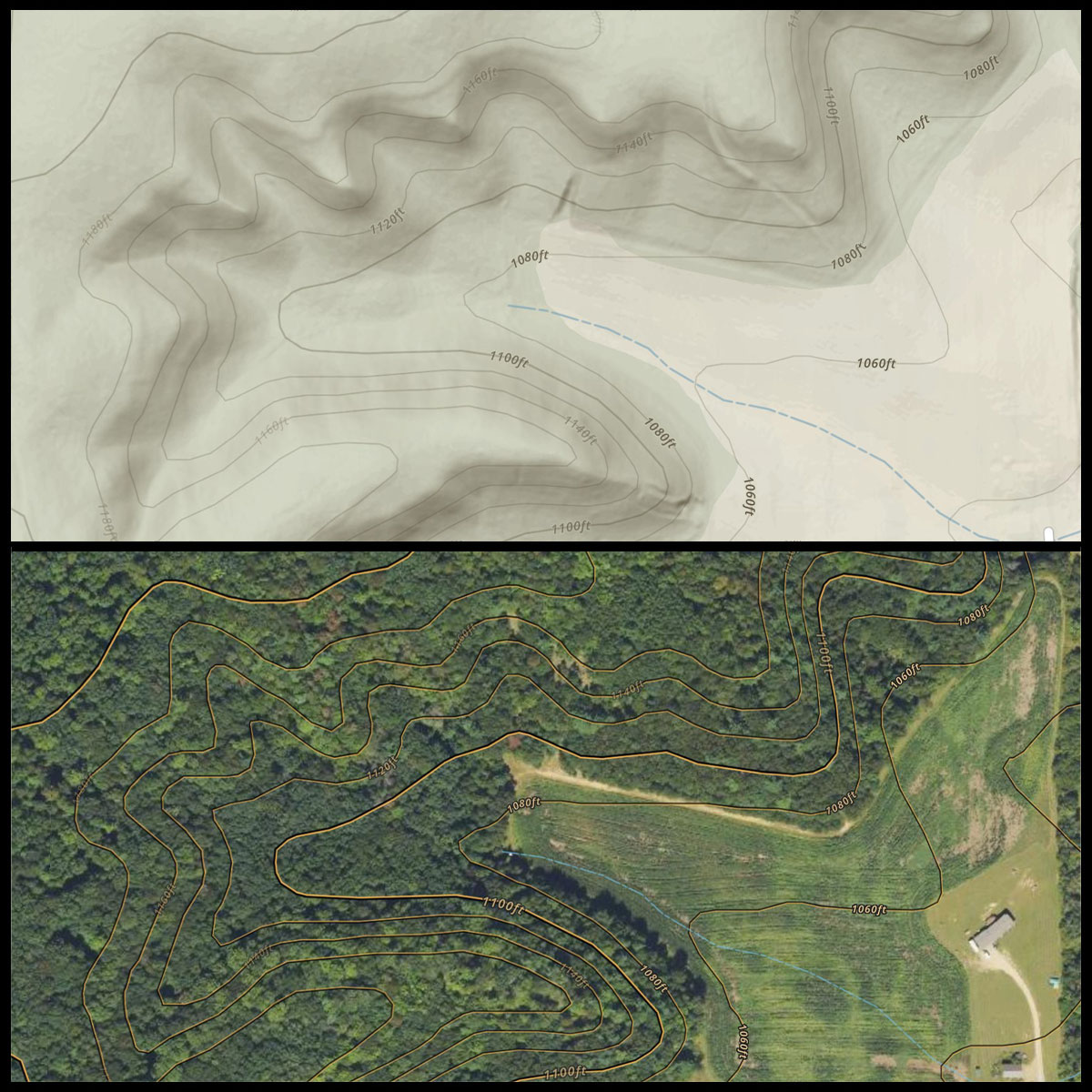 The northern ridge showcases several great bedding locations, high ridges with southwestern exposure, directly adjacent to a food source and with cover to escape towards in three directions.
The northern ridge showcases several great bedding locations, high ridges with southwestern exposure, directly adjacent to a food source and with cover to escape towards in three directions.
Feeding Zones
Knowing where deer bed is only half the battle. To really up your success rate, you need to trace their post-bed routines and intercept them along well-worn travel routes. First, identify the general direction deer leave their bedding areas at dawn and dusk, usually toward reliable food or water sources. Then, use your topo map to find the natural funnels and corridors they're most likely to use, such as saddles between two ridges, small draws that connect a hollow to a flat bench or the edge of thick cover.
Feeding areas vary dramatically by region and season. On your topographic map, search for sections where contour lines spread wide and flatten out, which indicate benches or terraces where deer can graze with minimal effort. These flats are often marked with a green vegetation symbol, but don't rely on that alone. Overlay aerial imagery or satellite views to confirm food types: low grasses, brushy browse or planted food plots. Notice how these flat benches usually sit just below or above steeper slopes, offering quick escape routes back into cover when danger approaches.
Beyond open grazing flats, deer gravitate toward high nutritional-value forages. Look for clusters of mast-producing trees; oaks, hickories, beeches or areas marked by fruit symbols that signal apple, crabapple or persimmon stands. On the edges of agricultural fields, you'll find early-season greens in alfalfa, clover or oats, shifting to corn and soybeans in late summer and fall. By linking bedding zones to these feeding hotspots with your contour-line analysis, you can position your stand or blind where deer travel from bedding to food, giving you a clear, wind-safe ambush point and the element of surprise.
 The following is a great example of a "staging plot", or a small food plot where deer first enter in the evening prior to moving to destination food sources such as large agricultural fields.
The following is a great example of a "staging plot", or a small food plot where deer first enter in the evening prior to moving to destination food sources such as large agricultural fields.
Route Planning and Stand Placement
Selecting Access Points
Identifying the perfect entry route on a topographic map is part instinct, part science. Unlike defined game trails, access points depend on shifting elements such as wind direction, precipitation, cloud cover and deer habits. Your goal is simple: slip in undetected, keeping the wind in your favor and your silhouette hidden from sharp eyes and keen noses.
Begin by plotting the prevailing wind against the deer's approach path. On the map, tightly spaced contour lines reveal steep slopes you can hug to break line of sight. Saddles, the low connections between two high points, act as natural funnels for wind, channeling air away from the deer's direction while giving you a shallow depression to move through. Draws and small ravines offer similar cover, especially when you enter from below the top of the bank, where you stay below the horizon.
Weather factors can tip the balance toward a noiseless approach. Rain, fog or low cloud cover quiets footsteps and conceals movement against a grey sky. Match these conditions to the terrain: terraces and benches tucked beneath ridges are less likely to draw a deer's attention, yet they position you downwind of major travel corridors. By factoring wind, weather and contour-line analysis, you'll pinpoint access points that maximize stealth and minimize detection, setting the stage for the perfect ambush.
Wind Direction
Deer rely on their noses more than any other sense, especially mature bucks that can smell danger from hundreds of yards away. By mastering how air moves through the landscape, you can turn your scent into an ally instead of a giveaway.
Before you head into the field, analyze where deer originate and where they're headed on your topo map. Then ask yourself:
- What is the prevailing wind during your hunt?
- How will morning and afternoon thermals shape your scent cone?
- Could deer slip in behind you with a shifting breeze?
Tightly spaced contour lines mark steep ridges and hillsides that become natural windbreaks. Position yourself on the downwind side so your scent rides over the crest and dissipates above the deer's path. Small draws, ravines and creek bottoms work like scent funnels at dusk, pulling cooler air and your odor downward and away from your stand.
Thermals shift with the sun. In the morning, cold air settles into low spots, rising over ridgelines as the sun warms the slopes. Plan a stand on the ridge top's sheltered, downwind slope, so your scent lifts and drifts away at first light. By late afternoon, those same ridges channel cooler air back into draws and hollows, creating a natural barrier between you and passing deer. This information will also help you determine if certain locations are better for morning or evening hunts.
Combine wind-direction data with contour-line reading and you'll identify entry points and stand locations that maximize cover and minimize scent exposure. With practice, you'll slip into position undetected, leaving deer none the wiser until it's too late.
Putting it All Together
Mastering topographic maps turns acres of confusing terrain into a handful of predictable hunting zones by revealing ridges, saddles, draws, benches, water sources and natural pinch points. Use contour spacing, map scale and legends together with aerial imagery and on‑the‑ground scouting to identify bedding areas, travel corridors and high‑probability ambush sites. Always plan entry routes and stand placement with wind, light and seasonal behavior in mind, and confirm land access and safety before you go. With these skills you convert map study into safer, stealthier hunts and consistently higher odds in the field.
10 Tracking Tips to Help Find Your Deer After the Shot
You shot your deer, but it took off. Now what? Follow these 10 tracking tips to recover your deer and make your hunt a success.
Every deer hunter dreams of the perfect shot-but whether the hit is solid or less than perfect, the work continues after you pull the trigger. Tracking is a skill every hunter must master because recovering your deer is just as important as making the shot.
By Bryce M. Towsley
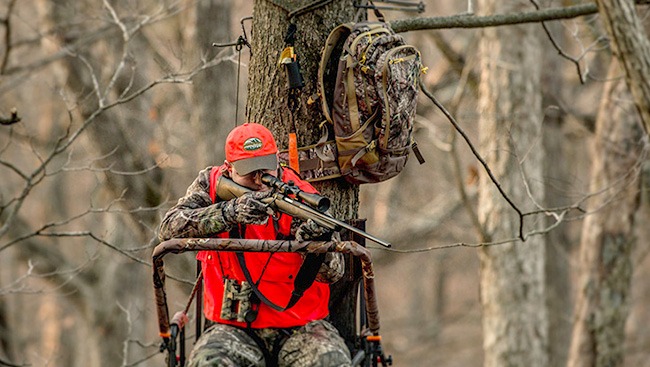 Very rarely do deer "drop in their tracks" at the shot. Once you make your shot, stay focused on the deer noting where it was when you fired and the direction it took off in.
Very rarely do deer "drop in their tracks" at the shot. Once you make your shot, stay focused on the deer noting where it was when you fired and the direction it took off in.
Despite what we may see on television, deer usually do not drop in their tracks at the shot. Sometimes, too, "stuff" happens and the shot is less than perfect. That's when you have to unleash your tracking skills and go find them. Here are 10 tried-and-true tracking tips that have served me well over the years in finding deer after the shot.
What Should You Do First After the Shot?
Tip 1. Stay Focused
After the shot, stay as calm as you can and stay focused on the deer. Watch it as long as you can then listen even longer. Often you will hear the deer long after you can't see it anymore.
Before you leave your stand, pick a clear landmark where you last saw the deer and another where you last heard the deer. Also, pick a landmark noting where the deer was when you shot. Have these landmarks firmly in your mind before you exit your stand. If you have a compass, take a bearing to each of these locations. Snap a few photos with your cell phone or use a small notepad to note the locations or draw yourself a little schematic that shows these three key landmarks.
 Before you leave your stand, use your phone to take a photo of where the deer was standing when you shot and the landmark where you last saw the deer before it disappeared.
Before you leave your stand, use your phone to take a photo of where the deer was standing when you shot and the landmark where you last saw the deer before it disappeared.
Go to where you last saw the deer and look for blood and tracks. Remember to look on the bushes as well as on the ground for blood. If you fail to find any, go to spot where you shot the deer and search for blood and/or hair. If you still don't find a blood trail of any kind, go back to your stand and double check to make sure you were looking in the right places.
Next, start where you last saw the deer and walk to the location where you last heard the deer. Watch for blood and other sign along the way. Sometimes it takes a while for the blood trail to start.
How Do Blood Color and Clues Change Your Game Plan?
Tip 2. First Blood
When you find blood, note its location. Is it high up on the bushes and far out from the trail? That might indicate arterial spurting. Does it seem to be in the center of the tracks, even though you took a broadside shot? That might be lung blood leaking out of the nose and mouth. Is the blood in the track? Maybe it's running down the leg.
Is there green gunk on the ground with a little blood? That's a gut shot. Resist the tendency to keep tracking that deer. Leave quietly and come back in the morning, or at least six hours later. A gut shot deer will lie down very quickly and if you leave it alone, it will die in that bed. Usually it will be relatively close to where you shot it. But if you keep pushing and jump the deer, they can turn into the Terminator, unable or unwilling to die and they can run for miles.
 When looking for a blood trail, heavy signs higher up on bushes or spurts off the trail may indicate arterial bleeding, which means you should find your deer shortly.
When looking for a blood trail, heavy signs higher up on bushes or spurts off the trail may indicate arterial bleeding, which means you should find your deer shortly.
Did you find pieces of bone? Trust me, it's not ribs as so many people think; 95% of the time it is pieces of leg bone. You may get that deer, but it's not going to be easy.
A lot of blood at the start that turns into a few drips and then stops in a ¼ mile or so, is usually a low hit in the brisket. You are in for a long day with that deer.
With a leg or brisket hit, the deer is very mobile and will keep moving if pushed. If you can get some help, it's best to place hunters along the escape routes and hope the deer comes by as you track the blood.
How Should You Mark a Faint Blood Trail?
Tip 3. Mark the Way
If the blood trail is tough to follow, mark the blood you found with toilet paper or torn paper towels, so you can easily find it again. Although many people recommend using flagging material, I don't use it. I know you plan to come back and take it all down, but plans rarely work out. Flagging tape lasts a long time in the woods. Paper towels or toilet paper are biodegradable and will disappear rather quickly.
Often, if you line up several pieces of paper you left hanging on branches you can see a clear direction of travel, which is a good place to continue the search if you have lost the blood and tracks.
Why Stepping Off-Trail Protects Critical Sign
Tip 4. Watch Your Step
Take care to walk to the side of the deer trail. You never want to step on the tracks or the blood. You may think you won't need to come back and find them again, but you will probably be wrong. Leave all the sign untrampled.
What to do When the Blood Trail Disappears?
Tip 5. When the Blood Stops
If you lose the blood trail, make wide sweeping circles that start and end at the last place you found blood. Keep your eyes on the ground and miss nothing. If you fail to find the trail, make a bigger circle. Repeat as necessary.
How a Ground-Level View Reveals Hidden Tracks
Tip 6. Get Low
The recent passing of a deer will scuff up the leaves. Older tracks will settle from time and gravity, but a fresh track will show a bit higher. It's usually not noticeable when standing up, but when you get your eyes to ground level you can often see the trail very clearly.
How to Run a Systematic Grid to Recover Deer?
Tip 7. When All Else Fails
A grid search is just what it sounds like. Divide the land into a giant grid, just like on graph paper. The lines should be close together so that no part of the land is unseen. Walk along these imaginary lines one by one until you find the deer, or some sign of the deer, or have walked the entire grid.
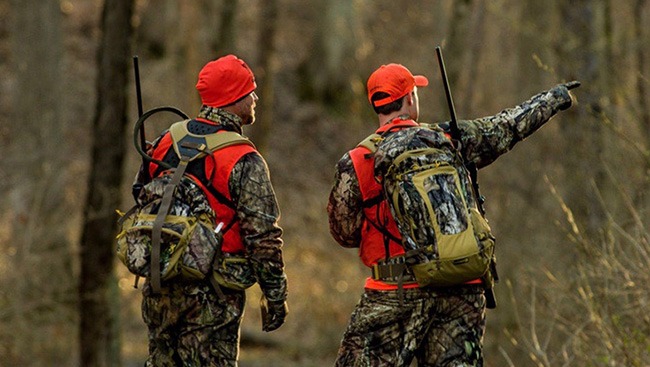 If you simply cannot find a blood trail of any kind, divide the land where you last saw the deer into a grid and walk each grid point until you find the deer or a sign of its trail.
If you simply cannot find a blood trail of any kind, divide the land where you last saw the deer into a grid and walk each grid point until you find the deer or a sign of its trail.
In that case, expand the grid and repeat. Look under every bush and in every brush pile. A mortally wounded deer will often crawl under cover and will die there.
What Lighting Works Best for Night Tracking?
Tip 8. Light the Way
You have no doubt read that when tracking at night, a Coleman lantern, "makes blood glow like neon." The lantern does show blood a bit better than a conventional flashlight, but it's always been a disappointment to me when I have used one. Besides, who has a Coleman lantern in their backpack?
A quality flashlight will show blood like its electrified. It's a good idea to have one in your pocket or backpack when hunting.
Where Would a Wounded Deer Go?
Tip 9. Become the Deer
Walk along while thinking, "If I were a wounded deer, which way would I go?" Just follow your instincts. You may have to return to the last sign and strike out in another direction a few times, but sooner or later the odds are you will find a new spot of blood or identifiable track and you'll be back in the game.
Can Intuition and Terrain Flow Lead You to Your Deer?
Tip 10. Turn Off Your Brain
Another approach is to turn off your brain and just walk. Let the terrain and vegetation guide your feet. Deer and other animals will take the path of least resistance and if you walk in a "Zen" state, going with the flow, you will find you do the same thing.
Once you get in tune with the woods, things like that just happen in the back of your mind. If you try to think about it too much, you screw it up, but if you just let the reptilian part of your brain operate then eons of evolution are suppressed and the caveman in you will come out of hiding and turn you into a creature of the woods, just like the deer. I know this may sound a bit too "new age," but I have found several animals we thought were hopeless using this technique.
How to Read the Land for Deer Hunting in Different TerrainsTracking with Technology
I used a thermal imaging unit in Zimbabwe a few years ago to watch for lions while the PH and trackers cut up a buffalo I had shot just before dark. Back then they were very expensive. Today, there are several affordable units designed for tracking.
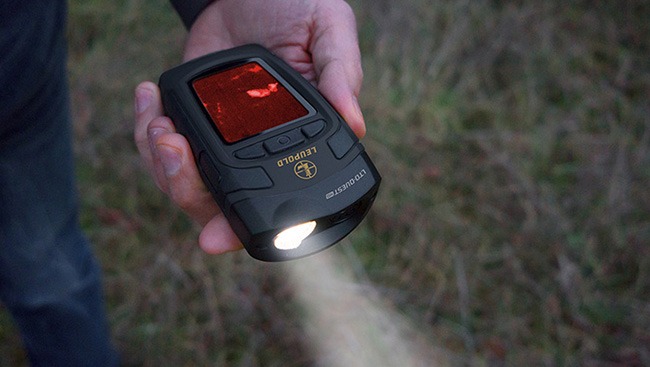 Photograph Courtesy of Leupold® & Stevens, Inc.
Photograph Courtesy of Leupold® & Stevens, Inc.
I have been using a Leupold LTO Quest. This is their entry-level unit and it has a camera and flashlight built in with the thermal sensor. Leupold claims the LTO Quest can detect heat signatures out to 300 yards. Deer season is closed as I am writing this, so I am finding alternatives to test it with. It easily can find my dogs even when they are out some distance.
I couldn't find a blood donor to help with the test, so I spit on my walkway on a cool night. The unit could easily see it, even after several minutes. This unit is sensitive enough that when I stood on my deck in my socks, the unit could detect my foot prints for several minutes after.
This technology may well be a game changer for tracking and finding wounded deer in the years ahead.
Conclusion
Recovering a deer after the shot isn't just about skill-it's about patience, persistence, and respect for the animal. By staying calm, reading sign carefully, and knowing when to push forward or back out, you dramatically increase your odds of success.
Remember: every track tells a story. Learn to read it, and you'll not only recover more deer but also deepen your connection with the hunt itself.
About the Author
Bryce M. Towsley has been writing about guns for 36 years and has published thousands of articles in most of the major firearms magazines. He has hunted all over the world and is a competition shooter in several disciplines. Towsley has several books available on guns, shooting and hunting as well as an adventure novel, The 14th Reinstated. Signed books are available on his website.
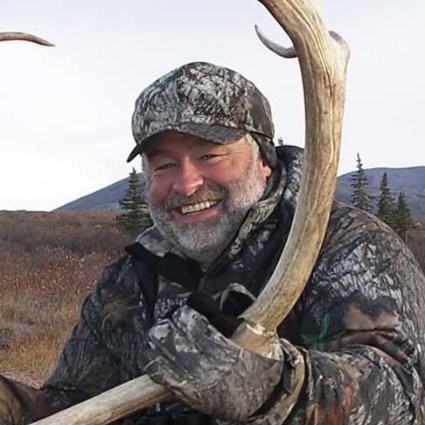
Bryce Towsley
Quick Takeaways: Tracking a Deer After the Shot
Stay calm Read the blood Be patient Follow all sign Stay calmMark the exact spot of impact before leaving your stand.
Read the bloodcolor and consistency reveal where the deer was hit.
Be patientRushing can push a wounded deer farther away.
Follow all signTracks, broken brush and scuffed leaves all tell the story.
FAQ: Common Deer Tracking Questions
Even experienced hunters run into tracking challenges after the shot. These quick answers cover the most common questions about when to follow, how to read sign and what to do when the trail goes cold.
How soon should I start tracking after shooting a deer? ExpandThis can vary depending on shot placement. If the downed deer is in sight and you are sure you made an accurate heart or lung shot, you can begin your cautious approach shortly after the shot, keeping your eyes on the deer.
If the deer is not in sight, you should wait 30 minutes to an hour before beginning to track.
What's the easiest way to find first blood? Expand
Start at the point of impact and look for hair, disturbed soil, or leaves with tiny blood droplets.
What should I do if I lose the blood trail? ExpandReturn to the last sign and begin making slow, wide circles until you pick it up again. If needed, switch to a grid search in thick cover.
What's the most common mistake hunters make after the shot? ExpandPushing too soon. A wounded deer can travel much farther if pressured. Waiting and reading the sign carefully increases recovery success.
Deer Hunting Strategies
Field to Fork: Venison Recipes
Venison is lean, healthy, and full of flavor. From simple burgers and chili to roasts and stews, it's a versatile meat that turns your harvest into delicious meals for family and friends.

Smoked Venison Meatloaf Recipe
Everyone needs a little comfort food from time to time, and meatloaf definitely fits the bill.
Read more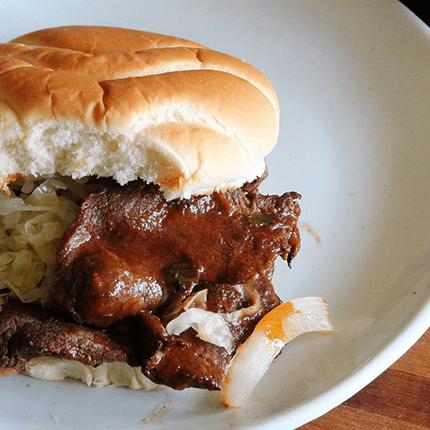
BBQ Venison and Sauerkraut Sandwiches
These quick and easy BBQ sandwiches are perfect for a quick venison meal.
Read more
Stuffed Shells with Venison Meat Sauce
This Stuffed Shells with Venison Meat Sauce recipe will hit the spot.
Read moreCelebrate National Hunting & Fishing Day
Celebrating National Hunting and Fishing Day!
On the fourth Saturday of every September, NHF Day recognizes generations of sportsmen and women for their contributions to the conservation of our nation’s rich sporting heritage and natural resources. One of the main goals of National Hunting and Fishing Day is to recruit new hunters and anglers by encouraging participation and increasing public awareness of the connection between hunting, angling, and conservation. Through self-imposed fees and excise taxes, sportsmen and women have raised more than $57 billion--that’s more than $100,000 every 30 minutes being raised for conservation. Now in its 52nd year, NHF Day is the largest, most effective grassroots movement ever undertaken to promote outdoor sports and conservation. Launched by Congress in 1971 and heavily promoted by NSSF for decades, NHF Day is now administered by Wonders of Wildlife Museum and has consistently recognized hunters and anglers for their leadership in wildlife and conservation. Find national, state, regional and local organizations hosting related events.Get Started
Hunting, Fishing, and Shooting Sports are not just great American pastimes – they are the very foundation that supports the model of wildlife conservation created more than a century ago in this country. By introducing new audiences to these activities, we ensure that wildlife and wild places will be protected for generations to come. Hunting is a useful and beneficial wildlife management tool that ensures and maintains the health and abundance of game species and the balance of our natural resources. There are a number of species, from upland birds to big game animals to hunt. Learn more about these species from game bird and game animal organizations.Take the Pledge
Take the pledge and submit a photo of you engaging in outdoor activities like hunting, fishing, or shooting to be entered to win one of 20 Bass Pro Shops gift cards ranging from $50 up to $500!Share Your Images
Upload an image of you hunting, fishing or target shooting and tag @NHFday on social media using the hashtag #GuideToOutside or Upload an image to be featured here!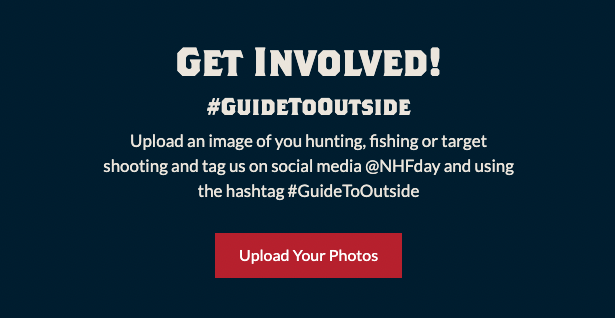
Hunt Smarter: Top-Rated Mobile Apps for Hunters in 2025
In today's world of high-tech hunting, a mobile phone can be just as essential as a good pair of boots. Whether you're glassing for elk in the Rockies or planning stand placement for the whitetail rut, the right app can help you scout smarter, track game more effectively, and stay safe and legal in the field. Below is a breakdown of some of the best mobile apps for hunters. Need to get sighted in before a hunt? Finding a nearby range is easier than ever thanks to tools like the NSSF's Where to Shoot app and online range finder-helping you turn any location into an opportunity to train smarter."
Weather Apps
![]()
![]()
AccuWeather and The Weather Channel
At the core of your app arsenal should be a good weather app with more advanced features than your cell phone's default weather app. Most of the popular weather apps are not only free but also offer very similar features.
AccuWeather offers very localized forecasts with features like MinuteCast, which gives precipitation updates minute by minute. AccuWeather also features extended forecasts, radar, weather alerts and more.
The Weather Channel app is like AccuWeather but with a few more content features, courtesy of its established media presence.
![]()
Weather Underground
Weather Underground is a solid choice for accessing reliable, general weather data. It includes useful details like sunrise and sunset times-essential for tracking legal shooting hours. One standout feature is its extensive historical weather database, which proves especially valuable when planning hunts in unfamiliar, out-of-state locations. By reviewing past conditions, you can get a clearer picture of typical wind patterns and temperature ranges, helping you prepare more effectively.
![]()
Windy
The Windy app offers a detailed wind visualization map that allows hunters to check real-time wind direction and speed across complex terrain. Hunters appreciate its wind compass, gust tracking and comparison across multiple forecast models, enabling smarter decisions about stand placement and movement. Windy offers clarity on how wind flows through ridgelines, valleys and topographical features that can make or break a hunt, making it especially valuable when hunting in hilly or forested areas.
Mapping Apps
![]()
On X Maps
onX Hunt is a hunting app that combines detailed GPS mapping with land ownership overlays, allowing users to easily distinguish between public and private property. Users can toggle between high-resolution topographical, satellite and hybrid maps, use 3D views for terrain visualization and download offline maps so navigation works even without cell service. The app's customizable waypoints, tracks and map Layers-for GMUs, weather, wind, soil, wildfire history and trail cameras-give hunters powerful tools for planning, sign marking and in-field coordination. One of the coolest new features from onX is the leafless imagery feature, which provides a view of the terrain after the leaves have fallen off.

Huntstand
Huntstand is a great hunting app focused on the Eastern United States. One of the most unique features of the Huntstand app is the Stand Reservation and Group Sharing feature. It allows members of a hunt club or a group lease to communicate right within the app. Another unique feature is the ability to integrate with the Command Pro trail camera app (Muddy and Stealth Cam Cameras). This allows you to organize your trail camera photos visually and within one central hunting "hub" of information.

Google Earth
An old standby, Google Earth is still a very powerful scouting tool for hunters of both public and private lands. Users can create and save projects, utilize ground-level view (when applicable) and view properties in tremendous detail in both 2D and 3D.
- Pro Tip: Different mapping applications get their imagery from different sources and at different times. It's a great idea to have multiple apps for comparing different satellite imagery offerings.

Basemap
Another hunt mapping option is the Basemap app. Like many of the other options, Basemap offers mapping with the ability to view a property with different layers. One of the unique features is their LRF (Laser Rangefinder Mapping) feature. This is especially useful for game recovery. Simply range the location you want to get to, orient your phone in that direction and enter the range in Basemap. Using GPS, the app will then set a waypoint at that location.

Spartan Forge
Spartan Forge is a newer hunting mapping app that has some features unique to its platform. One of the more popular features is the LIDAR mapping overlay, which allows users to see through the canopy of trees to get a better understanding of the terrain below. It also features a deer movement prediction algorithm, in-app live pin sharing and other features typically found on hunting-focused mapping apps.
Trail Camera Apps

Tactacam
The Tactacam app works with all Tactacam Reveal cell cameras. It allows you to visualize your camera locations on a map via GPS and organize your photos based on location. You can also request on-demand HD photos from within the app for real-time data. The Hunt Sync feature allows you to pause real-time photo delivery during hunts and receive the photos afterward.

Command Pro
The Command Pro app works with Muddy and Stealth Cam trail cameras. This feature-rich trail camera app offers unique features, including camera sharing, which lets you grant other app users access to your cameras. The integrated AI Photo tagging automatically tags animals, humans and vehicles. Recently, Command Pro was updated to include analytics, which help the user pattern wildlife and keep track of data such as the number of photos taken with a specific wind direction.
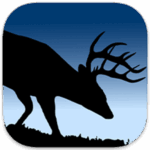
Cuddeback
Cuddeback trail cameras have been around for quite some time. Their unique "CuddeLink" systems allow you to use up to 24 cameras on just one cell plan. The cameras act as repeaters, sending photos from one camera to the next until they get to the "home" camera, which then uploads the images to the Cuddeback app. This unique system is excellent for properties with cell service "dead zones" because, as long as one camera has service, and the other cameras can "talk to" each other, the system will function.
Rut Activity / Other Apps

Deercast
The Deercast app's detailed weather-driven deer movement algorithm helps you predict deer activity up to two weeks in advance. Built-in tools like rain history and path tracking help you visualize your hunt in the palm of your hand. One of the most popular features is the DeerCast track tool, which offers expert guidance tailored to your shot placement, helping you to make the right decisions about how long to wait prior to recovery.

HuntWise
The HuntWise app is a popular, data-driven hunt forecasting app. Inside, you'll find HuntCast, which forecasts hourly, species-specific movement windows. The RutCast feature helps you make better hunting decisions during different phases of the rut. Lastly, WindCast helps you choose the best stand locations based on wind direction and scent control.

GOHUNT
The GOHUNT app is a powerful tool for out-of-state hunters looking for amazing insights. Visualize unit-specific draw odds in states across the country, share entire folders of waypoints and drawings with friends and view hunting locations in full 3D on your mobile device. If you're looking to hunt out of state or plan your hunt more effectively, the GOHUNT app can be a great place to start.
Streaming Apps

MyOutdoorTV
MyOutdoorTV features many of the most popular shows you'll find on outdoor TV shows, such as the Outdoor Channel and the Sportsman Channel. They also feature live TV channels and semi-live "JustShot" and "JustCaught" content, allowing users to view timely, in-season content.

CarbonTV
CarbonTV provides free access to high-quality hunting, fishing, survival and rural lifestyle videos and series. With an account, users can favorite shows to make it easier to always find the newest content. Along with videos, you can find podcasts and short films on the app as well.
Don't see one of your favorite hunting apps on this list? Send us a message and explain why it should be on our list!
Choosing Your First Deer Rifle
Choosing your first deer rifle can feel overwhelming. With so many calibers, actions, and features available, it's hard to know where to start. The good news? By focusing on a few key decisions, you can find a rifle that fits your needs and builds your confidence in the field.
By Phil Massaro
So, you've decided to join the millions who head afield each fall for whitetail deer season-welcome to a time-honored tradition!
If you plan on hunting deer with a rifle, you'll find a wide and varied selection of styles, sizes and applications. You'll want to choose wisely, for this rifle is going to accompany you on some wonderful adventures and will help you make some fantastic memories.
Deer Hunting Regulations: What You Need to Know
Before you head to your local firearms retail store to do some shopping, you'll need to become acquainted with your local game laws, to ensure that the area in which you will be hunting allows the use of a rifle. There are states and counties that prohibit rifles for deer hunting, while others restrict the type of rifle cartridge permitted for hunting deer.
Check Hunting Regulations by State There are plenty of choices among the deer rifles, and the correct choice is a personal one.
There are plenty of choices among the deer rifles, and the correct choice is a personal one.
How Do You Choose the Right Action for a Deer Rifle?
The first thing to consider in your selection of a deer rifle is the action you prefer. There are four to choose from.
Bolt-Action RifleThe bolt-action rifle is undoubtedly the most popular choice among today's deer hunters. Using a bolt with locking lugs to secure the breech when the action is closed and ready to fire, a bolt-action rifle is strong enough to handle the most powerful cartridges. Follow-up shots are fast in practiced hands.
A popular example is the Savage Model 110 bolt-action rifle.
Semi-Automatic RifleThe autoloading, or semi-automatic, rifle is another popular choice, whether in one of the traditional configurations or in a modern sporting rifle (MSR). They offer the advantage of a faster follow-up shot and are usually reserved for shorter cartridges of medium velocity, which are among the most popular for deer hunting.
Learn more about the functionality customizable nature of MSRs.
Lever-Action RifleThe lever-action rifles that were so popular in the first half of the 20th century still make a great choice for deer season, as they are light, handy and are chambered in cartridges that offer enough energy to effectively kill deer. There are modern variations that are chambered for some of the more powerful cartridges like the .30-'06 Springfield and .270 Winchester, while you'll find traditional models chambered for lower pressure cartridges like the .30-30 Winchester and .35 Remington. In the more traditional chamberings like the latter, effective range is generally less than that of the more powerful cartridges chambered in bolt-action rifles, so these lever-actions remain a favorite with hunters hunting in thick cover and where shots are not long.
A good example is the Winchester Model '94 lever-action rifle.
Single-Shot ActionThe last action you have for consideration is the single-shot. While they are often the choice for adults mentoring youth hunters because they break open to easily show an unloaded gun and can, as the name implies, hold only one shot, there are a number of highly accurate, sophisticated single-shot firearms on the market that any adult deer hunter would enjoy. They tend to be lighter in weight than their bolt-action and semi-auto counterparts, making them a great option for still hunters, stalkers and those hiking miles of wilderness. Many offer a switch-barrel option, which means you can fire different cartridges simply by swapping out the barrel, and that provides, essentially, for many guns in one.
A good example is the Ruger No. 1 single-shot rifle.
What Stock Options Work Best for Beginners?
While shopping, you'll find deer rifles outfitted with a variety of stock types. There will be the classic wood stock (usually of walnut), but there are also laminate wood stocks that are both snazzy looking and durable, and many rifles intended to stand up to the rigors of hunting in all the elements wear a synthetic or polymer stock. All make a good choice, so it will come down to your personal preference. Just know that the synthetics will better resist the effects of the elements, but there is something warm and comforting about the feel of a walnut stock, and wood stocks are easier for a gunsmith to alter when it comes to adjusting length for a proper fit. If you like a blend of both ideas, a laminate wood stock makes a great compromise, offering a weather-resistant package yet retaining the feel of natural wood.
I mentioned the fit of a rifle. That's an important consideration in choosing a deer rifle (or any firearm). An ill-fitting rifle will invariably be uncomfortable to shoot-and it can also make shooting unsafe if you can't handle the rifle properly. If the rifle's stock is too long or too short, it will not come up to your shoulder properly, and that can pose a problem if a quick shot presents itself-sometimes one quick opportunity may be all you have at a deer.
Stocks that don't fit can cause poor shooting habits, as the felt recoil can intensify, especially when practicing with the rifle. Any firearms retail store with knowledgeable salespeople will encourage you to shoulder any rifle you're considering to ensure the fit and balance work with your frame. When evaluating fit that way, also keep in mind the weather in your area during deer season, as a heavy hunting coat and layers underneath will absolutely affect the way your rifle fits. Even if you're shopping in summer, bringing along the coat and other upper body layers you might be wearing in November could make the difference in choosing a gun that's a joy to shoot and one that's awkward.
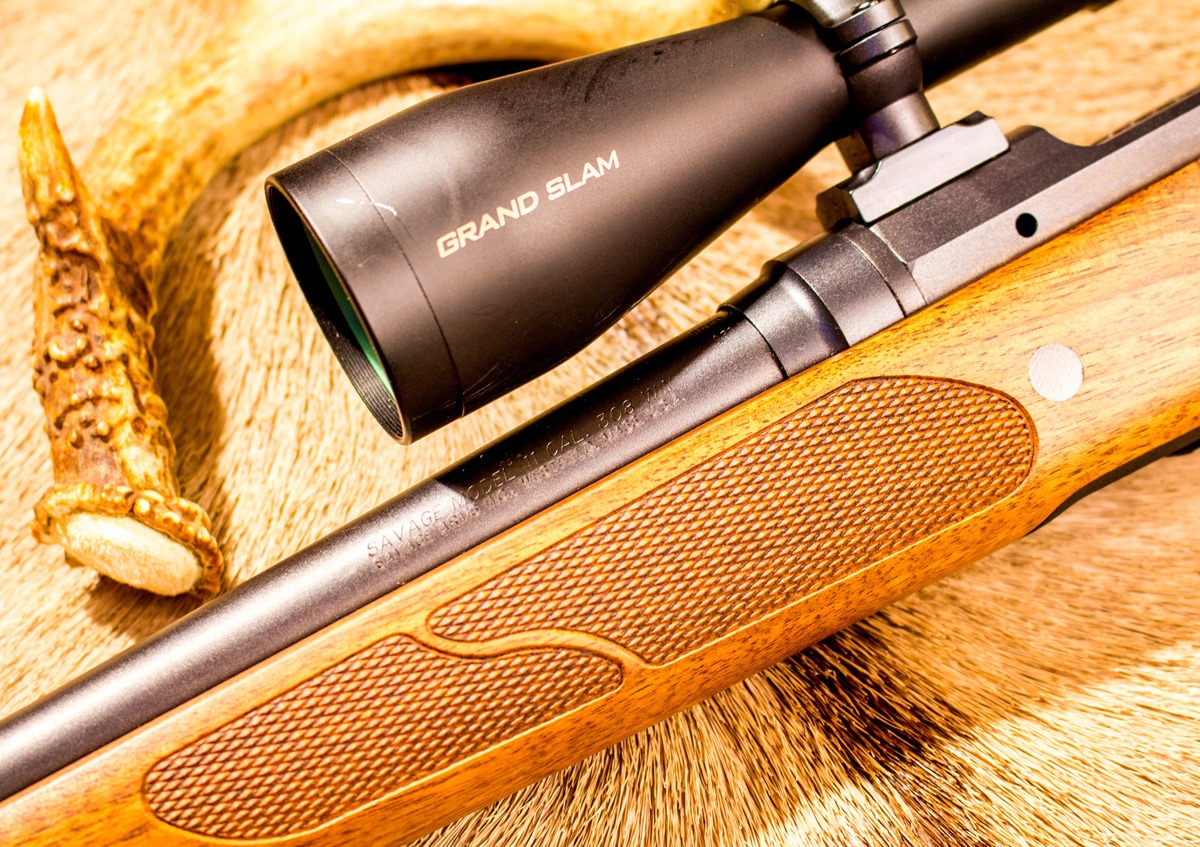 A short-action Savage Model 11, chambered in .308 Winchester and stocked in the LadyHunter configuration with a shorter buttstock, is a perfect choice for women heading to the deer woods.
A short-action Savage Model 11, chambered in .308 Winchester and stocked in the LadyHunter configuration with a shorter buttstock, is a perfect choice for women heading to the deer woods.
Do You Need a Scope for Deer Hunting?
Unless your hunting area is thickly wooded and shots will be very close, odds are you'll want to take full advantage of a telescopic sight mounted on top of your rifle. They allow for precise shot placement, and there are models available for all sorts of hunting scenarios and in prices from budget-saver to budget-buster. For your first deer rifle, I'd make sure that your choice can easily accommodate having a scope mounted on it.
Rifle Scope Resources
Mounting a Rifle Scope The Parts of a Rifle Scope The Numbers on Your Scope Rifle Scope Reticle Options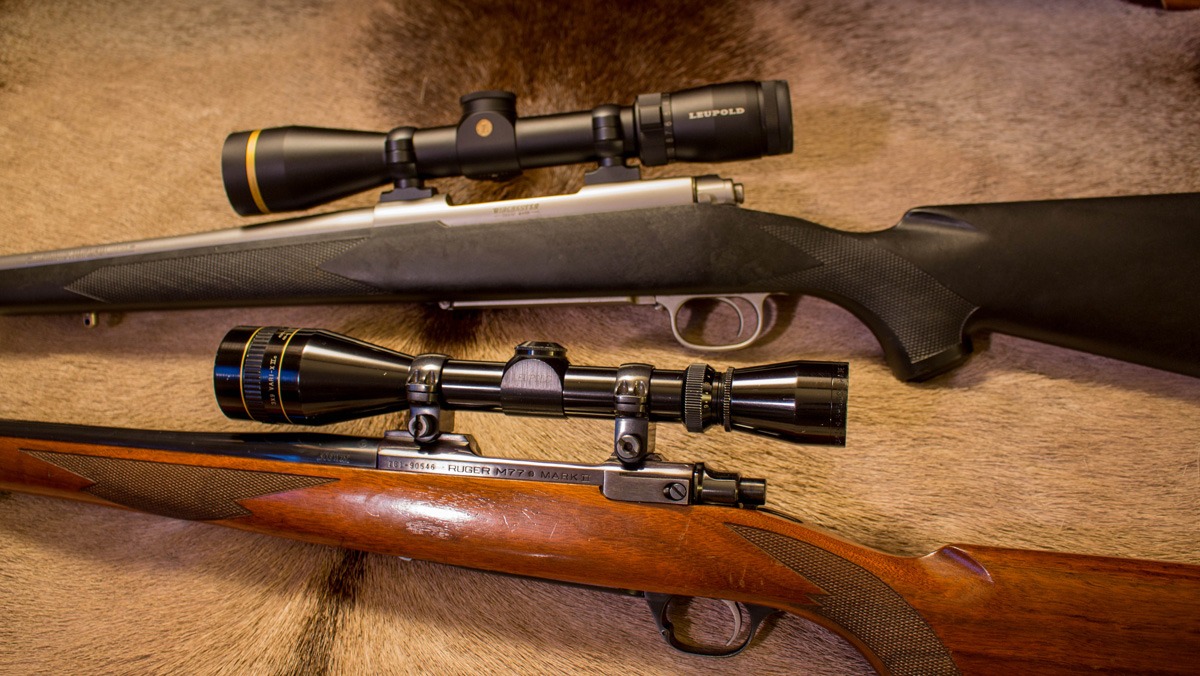 A pair of bolt-action rifles, the Winchester Model 70 and Ruger Model 77 MkII, each a great choice for general deer hunting.
A pair of bolt-action rifles, the Winchester Model 70 and Ruger Model 77 MkII, each a great choice for general deer hunting.
Which Caliber Is Best for a First Deer Rifle?
You'll see many different cartridges available among the deer rifles, so many that it can be almost overwhelming. My recommendation for a first deer rifle would be to choose one of the more popular calibers, so that ammunition will be readily available at all times. The classic .30-'06 Springfield, the .308 Winchester, the 6.5 Creedmoor, .243 Winchester and .270 Winchester all make excellent choices for all-around deer hunting, as they are just as effective at longer ranges as they are up-close and personal. For the lever-action, the .30-30, .444 Marlin and even the .45-70 are great choices and should also be readily available at retailers. All are easy enough on the shoulder for a shooter to become proficient, and all are readily available in almost all sporting goods stores that sell ammunition.
There are dozens and dozens and dozens of cartridges out there old, new and in between, and every year a new crop is introduced. Get your first hunts in with a rifle that's easy for you to shoot and chambered in a cartridge that you can find at just about any retail store. Then, once you have that first venison burger or tenderloin wrapped in bacon, I can almost guarantee you'll be hooked on deer hunting and exploring new places to hunt and ways to be more successful. Cartridge choice is one way to improve your success when tailored to the habitat your hunting and how your hunting, so while the get-'em-done cartridges I listed above will indeed get the job done, trying a new cartridge and rifle combination ups the entertainment quotient considerably.
 The Winchester Model 94, chambered in .30-30 Winchester, still makes a solid deer rifle, especially in the East where shots tend to be closer in thick forest habitat.
The Winchester Model 94, chambered in .30-30 Winchester, still makes a solid deer rifle, especially in the East where shots tend to be closer in thick forest habitat.
How Much Should You Spend on Your First Deer Rifle?
The cost of a deer rifle can easily range from a few hundred dollars to several thousand, depending on your budget and taste. The good news is that many rifles models referred to as "entry-level" are better now than they ever have been. While they may lack some frills, you will find that they are as dependable and accurate as their fancier upgraded versions, able to literally serve for a lifetime of deer hunting. In fact, many times, models in a manufacturer's series lineup will all be the same rifle mechanically, but the upgraded versions will be dressed up with a camo-clad or higher grade wood stock or wear a Cerakote finish on their metal parts. Cosmetics are nice, and some do help ward off wear and tear, but they don't make the gun shoot any better. Perusing the used gun racks of your favorite area retails should also be something to consider. Not only can a great find there net you a bargain, finding them with scopes already mounted is commonplace, and many retailers these days are carefully vetting their used guns before they offer them for sale and offering warranties.
While I have hunted with models up and down the price range, I've noticed that none of the deer I've killed were much concerned with the price tag or pedigree of the rifle I carried. Yes, I do enjoy the finer points of a classic rifle, the upgraded wood, high-polished blue metal, and finely tuned action and trigger, but I'll will readily head to the deer woods with any current production rifle right off the rack-and I won't wince when the stock gets a scratch on it.
Shopping for your deer rifle is one of the best parts of deer hunting. It is one that's a very personal choice, and once you find the one that's you-and you kind of know it when you shoulder it, it's just that kind of feeling-your rifle will invariably become an old friend quickly.
Conclusion: Confidence Over Complexity
Choosing your first deer rifle can feel overwhelming, but it doesn't have to be. Focus on the fundamentals-action, stock, optics, caliber, and budget-and you'll end up with a rifle that fits you, not just your wallet.
More than the gear itself, what matters most is practice and confidence. The best rifle for you is the one you can shoot comfortably and accurately every time. Pair that rifle with safe handling, plenty of range time, and a respect for the hunt, and you'll be well on your way to building lasting deer hunting memories.
About the Author
Phil Massaro's expertise both with firearm and sentence has quickly given him a hard-earned reputation in the outdoor industry. Hunting in his native New York state since the age of 14, Massaro now travels the world, pursuing everything from the whitetails and black bears of New England to red stag in Scotland, Cape buffalo in Zambia and Mozambique, elephant in Zimbabwe and water buffalo in Australia. His work appears regularly in the NRA's American Hunter and Shooting Illustrated, Gun Digest, Guns & Ammo and Dallas Safari Club's Game Trails Magazine, often accompanied by the photography of his wife, Suzie, also an avid hunter. When not writing or hunting, he works as a professional land surveyor alongside his father, and he also manages to squeeze in time at the reloading bench of Massaro Ballistic Laboratories, the custom ammunition company he founded.

Phil Massaro
Quick Takeaways: Choosing Your First Deer Rifle
Action Stock Optics Caliber Budget ActionBolt-action rifles are reliable, simple and beginner-friendly.
StockSynthetic stocks are durable; wood stocks offer classic feel but need more care.
OpticsA quality scope makes a big difference for accuracy and confidence.
Caliber.243, .270 and .308 are proven beginner calibers for deer hunting.
BudgetA reliable entry-level rifle costs less than you might think-focus on fit, not flash.
FAQ: Beginner Deer Rifle Questions
Hunters often ask practical questions about adapting their tactics to different landscapes. These answers cover the most common terrain-specific challenges and strategies.
What is the best type of rifle for a beginner deer hunter? ExpandMost new hunters start with a bolt-action rifle. It's dependable, easy to maintain, and widely available in beginner-friendly calibers.
Which caliber should I choose for my first deer rifle? ExpandPopular beginner calibers include .243, .270, and .308. They balance manageable recoil with enough power for ethical deer harvests.
Do I really need a scope as a beginner? ExpandYes. A good entry-level scope improves accuracy and builds confidence. Even a basic 3-9x scope can make a big difference for new hunters.
How much should I spend on my first deer rifle? ExpandYou don't need the most expensive rifle to be successful. Many reliable models fall between $400-$700. Prioritize fit, comfort, and dependability.
Should I buy new or used for my first rifle? ExpandBoth options can work. A new rifle ensures warranty and reliability, while a used rifle may save money if purchased from a trusted source.
Deer Hunting Strategies
Deer Hunting 101
Online Course
The Official NDA Deer Hunting Course will teach you where to hunt, deer hunting tips and strategies, the best rifle for hunting deer, and much more.
LEARN MOREField to Fork: Venison Recipes
Venison is lean, healthy, and full of flavor. From simple burgers and chili to roasts and stews, it's a versatile meat that turns your harvest into delicious meals for family and friends.

Smoked Venison Meatloaf Recipe
Everyone needs a little comfort food from time to time, and meatloaf definitely fits the bill.
Read more
BBQ Venison and Sauerkraut Sandwiches
These quick and easy BBQ sandwiches are perfect for a quick venison meal.
Read more
Stuffed Shells with Venison Meat Sauce
This Stuffed Shells with Venison Meat Sauce recipe will hit the spot.
Read more